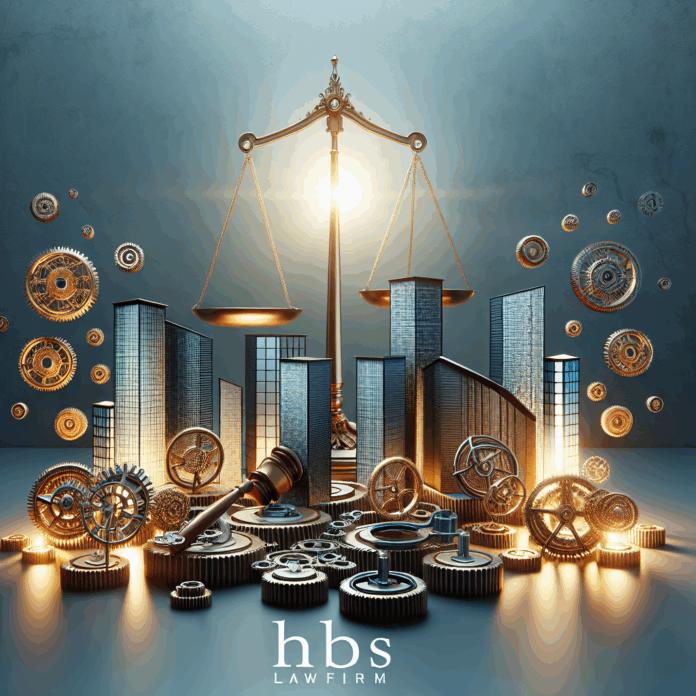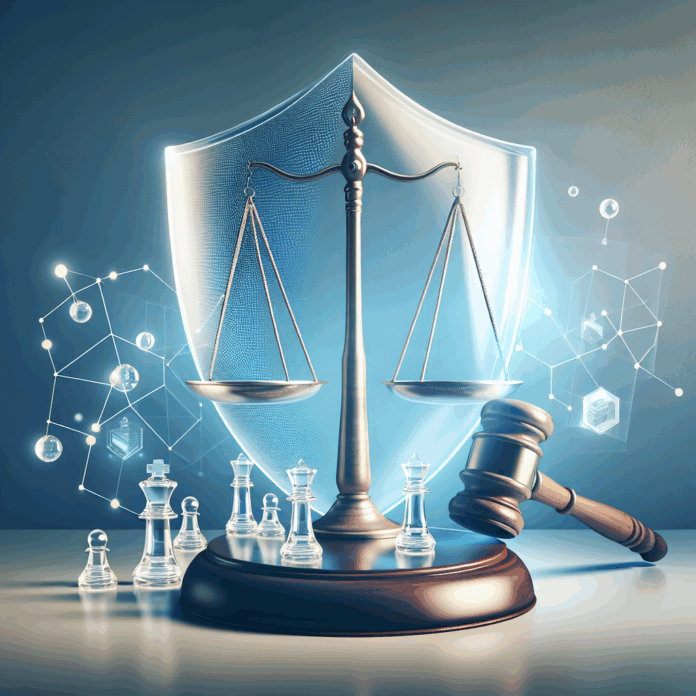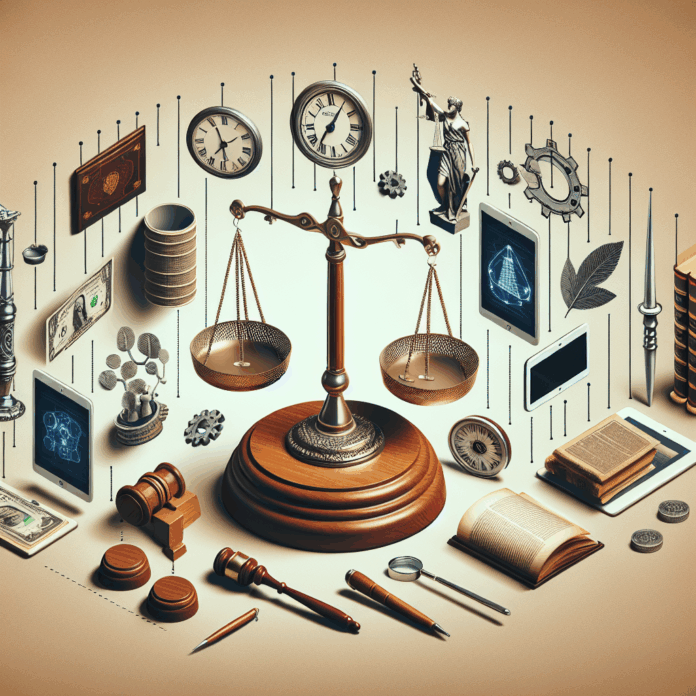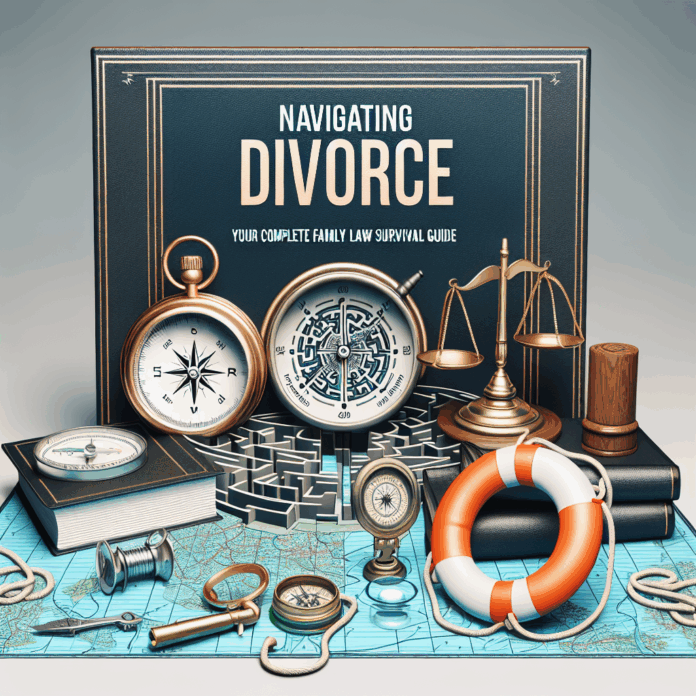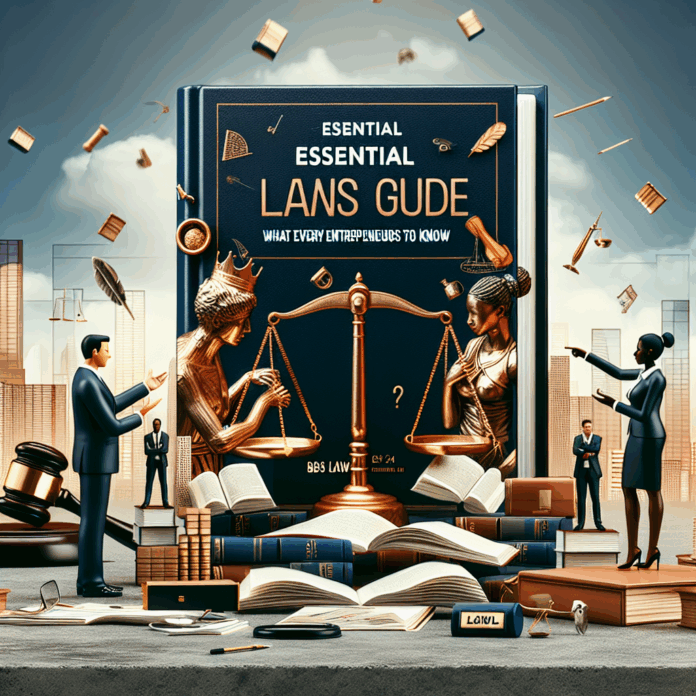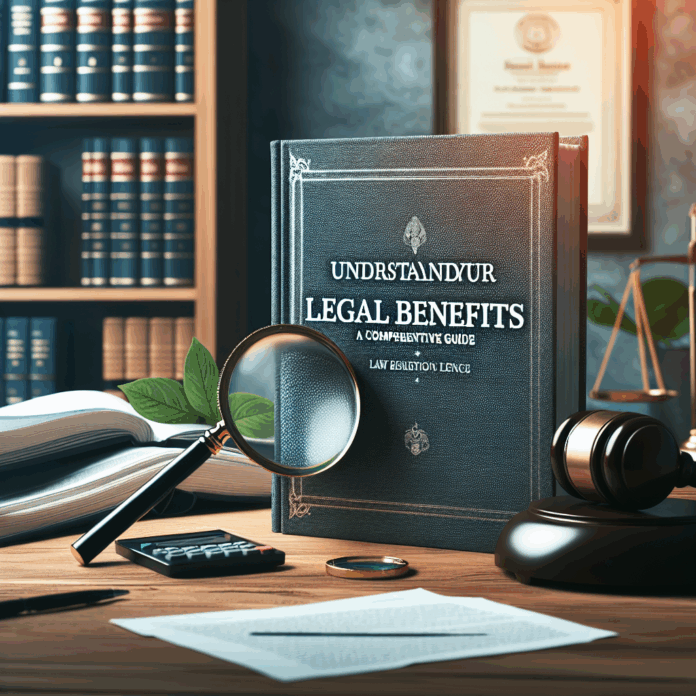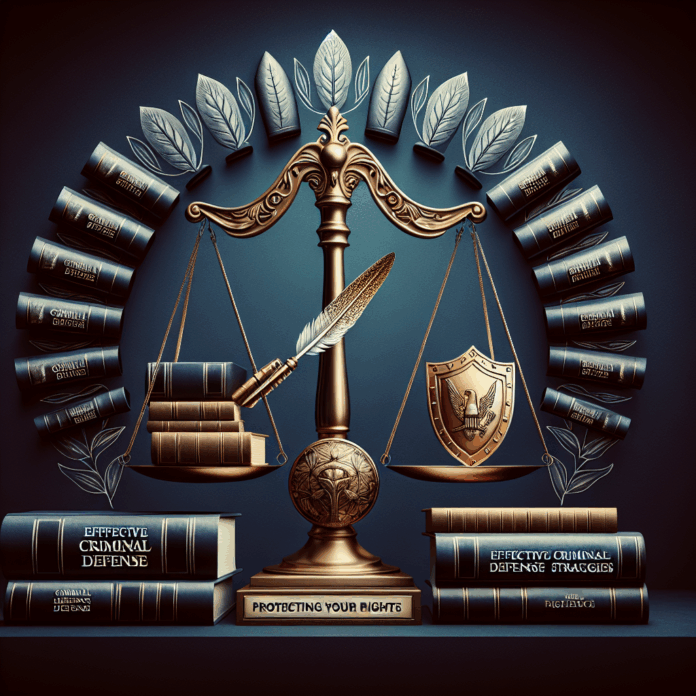Essential Legal Frameworks for Modern Business Success
In today’s complex business environment, understanding the essential legal frameworks is crucial for achieving and maintaining success. From startups to multinational corporations, every business must navigate a labyrinth of laws and regulations that govern operations, transactions, and relationships. This guide provides an overview of key legal frameworks that influence modern business success, including insights into compliance, risk management, and strategic planning.
Understanding Business Law Fundamentals
Embarking on the entrepreneurial journey is like cooking a gourmet meal. Even if you’re a culinary genius, you still need to know the basics—like how not to burn water. Similarly, regardless of your business acumen, grasping the essentials of business law is crucial for your venture’s success.
The Building Blocks of Business Law
Business law encompasses a wide variety of legal domains that influence every aspect of running a company. Here are some key areas to consider:
- Corporate Governance: This involves the structures and processes for directing and managing a company. It’s like being the conductor of an orchestra—keeping everyone in harmony is vital.
- Contract Law: Contracts are the bread and butter of business arrangements. Whether it’s with suppliers or clients, understanding contract negotiations in business is essential.
- Employment Law: Navigating employment law for businesses ensures you’re treating employees fairly and complying with statutory obligations.
- Intellectual Property (IP) Law: Your creative assets are valuable. Trademark registration for businesses helps protect these assets, much like guarding your secret family recipe!
- Mergers and Acquisitions (M&A): The art of M&A can be complex but rewarding if done right. It’s akin to blending two streams into a single powerful river.
The Importance of Legal Compliance
The U.S. gross domestic product reached .1 trillion in 2022 (source). With numbers this staggering, it’s clear that businesses form the backbone of our economy. Ensuring compliance with business regulations isn’t just about avoiding penalties; it’s about being part of this thriving ecosystem.
Tackling Business Legal Issues
No business journey is without its hurdles. From small business legal issues to larger ones like antitrust regulations in business, knowing how to tackle these challenges head-on is crucial:
- Seek Legal Advice for Businesses: Consulting with a knowledgeable business attorney can help you navigate tricky waters efficiently.
- Pursue Proactive Legal Strategies: Engaging in compliance audits for businesses helps identify potential pitfalls before they become major problems.
- Create Comprehensive Partnership Agreements: Clear partnership agreements in business set expectations and prevent disputes down the line.
If you’re still curious about how broad these legal frameworks can get, check out our piece on the intersection between real estate law in business contexts here.
Navigating the labyrinthine world of business law may seem daunting at first, but armed with knowledge and expert guidance, you’ll be ready to make your mark—without getting lost in legal mazes or running afoul of regulations.
Legal Compliance and Risk Management
In the dynamic world of business and legal landscapes, staying on the straight and narrow is crucial. Legal compliance isn’t just a fancy term to throw around in meetings; it’s a vital element that can make or break your company. From small startups to multinational corporations, understanding and adhering to business regulations is non-negotiable.
The Importance of Legal Compliance
Think of legal compliance as the guardian angel of your business. It ensures that your operations are meeting all the necessary legal requirements, thus shielding you from potentially costly penalties and legal complications. But remember, an angel can only do so much if you ignore it.
- Avoid hefty fines and sanctions by staying updated with relevant laws.
- Boost your company’s reputation by being a law-abiding enterprise.
- Improve operational efficiency through streamlined legal processes.
Strategies for Effective Risk Management
No one likes surprises unless it’s their birthday. In the world of business, surprises often come in the form of lawsuits or regulatory changes. Here’s how you can manage risks effectively:
- Regular Audits: Conducting compliance audits helps identify potential risks before they become actual problems.
- Staff Training: Educate employees about compliance requirements to ensure company-wide adherence.
- Legal Consulting: Engaging with professional legal consulting for businesses can provide tailored strategies for risk management.
If you’re thinking about mergers or acquisitions, understanding the intricacies of corporate governance law is essential. It’s like playing Monopoly without knowing which properties are valuable—risky and potentially expensive!
For more insights on navigating complex regulations, check out our article on Consumer Review Fairness Act of 2016. Remember, knowledge is power, especially when it could save you from unnecessary headaches down the line.
The U.S. unemployment rate was 3.7% in October 2023 (source). With such an evolving employment landscape, staying compliant with employment law for businesses is more important than ever to avoid adding more stress to an already competitive market!
Corporate Governance and Strategic Legal Planning
In the bustling world of modern commerce, having a robust corporate governance framework is like having a reliable GPS for your business journey—without it, you may find yourself lost in the labyrinth of legal complexities. Let’s face it, the term “corporate governance” often conjures images of lengthy board meetings and convoluted compliance reports. But at its core, it’s about ensuring that your business operates transparently and efficiently while safeguarding the interests of all stakeholders.
The Pillars of Corporate Governance
- Accountability: Businesses are accountable to their shareholders, employees, and customers. Ensuring transparency in decision-making builds trust.
- Fairness: Treating all stakeholders equitably is critical to maintaining healthy relationships and staying on the right side of regulations.
- Transparency: Open lines of communication and clear reporting practices help foster an environment where issues can be addressed head-on before they escalate into litigation nightmares.
A strong corporate governance structure not only mitigates risks but also enhances decision-making processes, which is crucial when navigating the complex waters of contract disputes, one of the most common types of business litigation. By aligning governance practices with strategic goals, companies can avoid these costly legal pitfalls.
The Role of Strategic Legal Planning
If corporate governance is your GPS, then strategic legal planning is your map. It involves anticipating legal challenges before they arise and plotting a course to steer clear of them. This proactive approach can save businesses not just money but potential reputational damage.
- Mergers and Acquisitions: Crafting a strategic plan ensures seamless transactions that comply with all necessary legal standards.
- Intellectual Property Protection: Preemptive registration and management strategies can protect your innovations from infringement.
- Data Protection: With privacy laws tightening globally, having a data protection plan that’s ahead of the curve can prevent costly breaches.
An insightful example lies in understanding how strategic legal planning could have prevented some infamous corporate downfalls we’ve observed over the years—a reminder that foresight in business law is more than just advisable; it’s essential for survival.
Tapping into expert advice for these areas can drastically alter your trajectory toward sustainable success. For instance, exploring resources like those at HBSLawFirm.com provides valuable insights into navigating these aspects with confidence (read more here). With informed guidance at your fingertips, you’ll be equipped to handle whatever regulatory challenge comes your way—with maybe only a few extra cups of coffee required!
Mergers, Acquisitions, and Intellectual Property Protection
In the ever-evolving landscape of business and legal matters, mergers and acquisitions (M&A) are not just about expanding your empire or conquering the corporate world. They’re akin to a marriage—exciting, full of potential, but with a prenuptial agreement advised! Understanding the legal intricacies involved can save you from potential pitfalls.
The Legal Tango of M&A
When two companies decide to join forces, whether through a merger or acquisition, it’s crucial to navigate the labyrinth of business regulations. Key considerations include:
- Due Diligence: This is your business detective work. Ensuring that all financials, legal standings, and operational variables are transparent is imperative.
- Valuation: Determining the worth of a company isn’t as simple as guessing how many jellybeans are in the jar. It involves comprehensive analysis and strategic assessments.
- Regulatory Compliance: Ensure that all actions comply with antitrust laws and receive necessary regulatory approvals. Nobody wants their big day interrupted by an unexpected courtroom visit!
The Shield of Intellectual Property (IP) Protection
Your ideas are like your children—precious and in need of protection. Intellectual property law provides that safety net, preserving your business’s creative endeavors from unsanctioned use.
- Trademarks: Secure the brand identity. Trademark registration ensures that your brand name is legally yours and deters others from using it without permission.
- Patents: These protect inventions—offering exclusive rights that prevent others from making, using, or selling your invention without consent.
- Copyrights: Safeguard creative works such as artwork, literature, or music from unauthorized reproduction or adaptation.
A well-devised IP strategy can be the cornerstone for business success. After all, in this age of innovation, protecting your creations might just be as important as creating them.
Remember what Franklin D. Roosevelt said: “The only limit to our realization of tomorrow will be our doubts of today.”source. So let’s leave those doubts behind and confidently approach M&A with robust IP protection!
Navigating International Trade Regulations and Franchise Laws
In today’s hyper-connected global economy, embarking on international trade can feel akin to negotiating a tricky obstacle course. However, with the right legal compass—think business and legal expertise—you can turn those obstacles into opportunities. Let’s dive into how understanding international trade regulations and franchise laws can pave the way for modern business success.
Unlocking Global Markets: Know Your Trade Regulations
Trade regulations are like an intricate dance—misstep, and you’re out of tune with international markets. To stay in sync:
- Understand Tariffs and Duties: These are financial barriers that protect local industries but also affect your bottom line. Countries like the U.S., for example, adjust tariffs based on trade relationships and economic needs.
- Stay Compliant with Export Controls: These rules monitor what goods can leave a country and to where they’re headed. Make sure your products aren’t on any “prohibited” lists!
- Navigating Non-Tariff Barriers: These might include quotas or embargoes. For instance, trade embargoes imposed by one nation may require businesses to seek alternative markets or suppliers.
The World Trade Organization (WTO) plays a crucial role here by providing guidelines aimed at reducing these barriers, making it easier for everyone to participate in global commerce.
The Franchise Frontier: Cracking the Code
If you’re considering expanding through franchising, understanding franchise laws and regulations is imperative. Here’s what you need to know:
- The FDD is Your Bible: The Franchise Disclosure Document (FDD) must be provided to prospective franchisees before any agreement is signed. This document is your legal safety net!
- Navigating Legal Landscapes Across Borders: Each country has unique franchise laws; for instance, Australia requires franchisors to provide specific information under its Franchising Code of Conduct.
- Avoiding Pitfalls with Legal Support: From compliance audits to licensing agreements in business, having legal advisors who specialize in franchise law can save you from costly missteps.
The realm of international trade and franchising is complex but rewarding. By understanding these frameworks, you’re not just playing by the rules—you’re mastering the game. So go ahead, take that leap into global arenas with confidence!
If you’re keen on exploring further complexities like real estate law within this context or perhaps learning how environmental regulations could impact your business strategies, check out our detailed insights at HBS Law Firm’s resource hub—it’s like having a Swiss Army knife for all your legal needs!
Tackling Business Litigation and Dispute Resolution Strategies
No matter how well-prepared a company may be legally,
disputes can arise.
Effective dispute resolution strategies help mitigate these situations while minimizing impact.
- < li > Best practices
for managing
business litigation< / li >< li > Utilizing alternative dispute resolution methods< / li >< li > The importance
of legal support
for enterprises facing litigation challenges< / li >
< p >
In conclusion,
understanding essential legal frameworks
is critical
for modern business success.
Legal advice
for businesses ensures not only compliance but also fosters growth,
innovation,
and competitiveness.By staying informed about evolving laws,
companies can proactively address potential issues
and leverage opportunities effectively.
As you navigate your own journey,
consider seeking guidance from a qualified business attorney who can provide valuable insights tailored specifically towards achieving long-term objectives.< / p >
